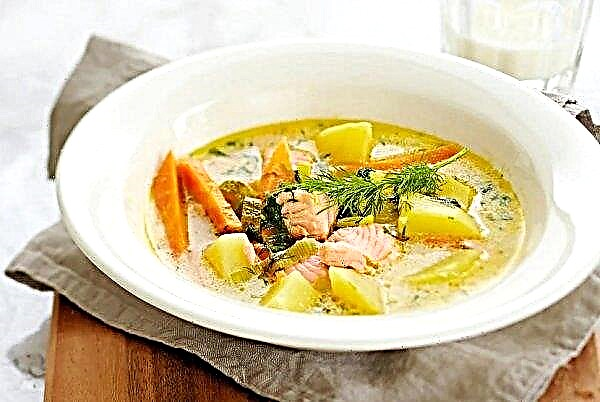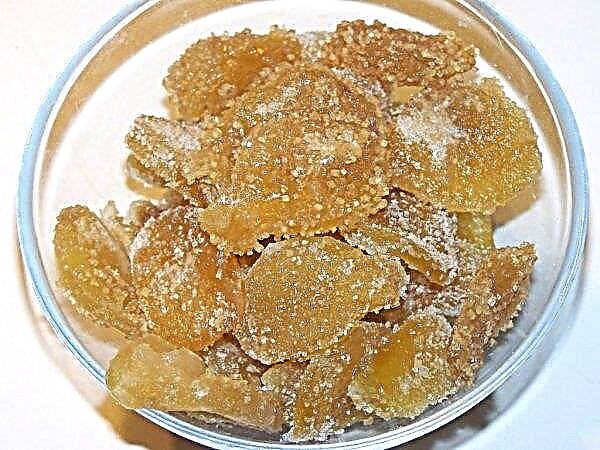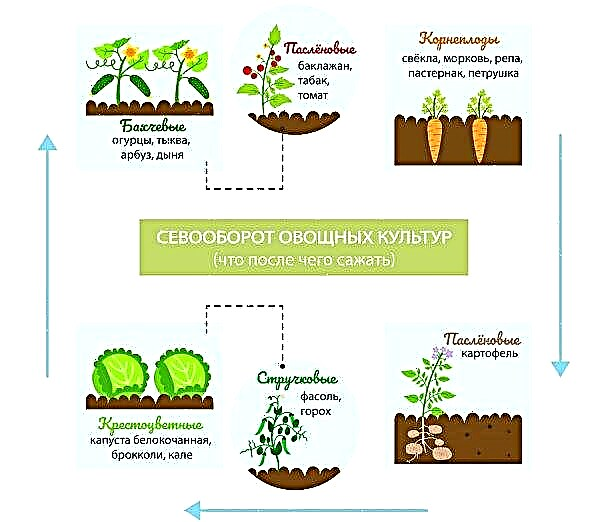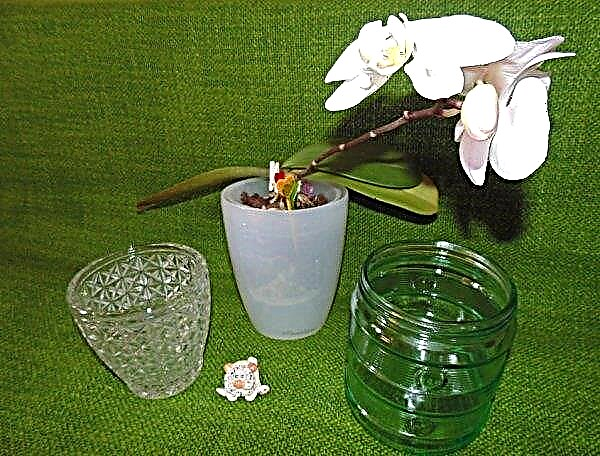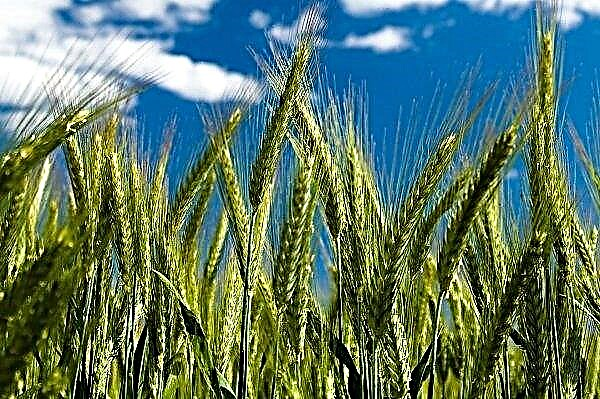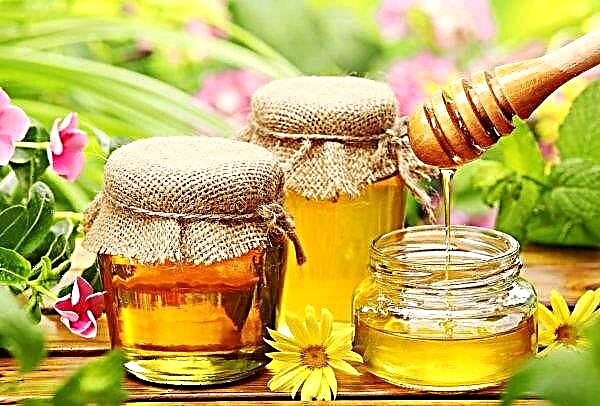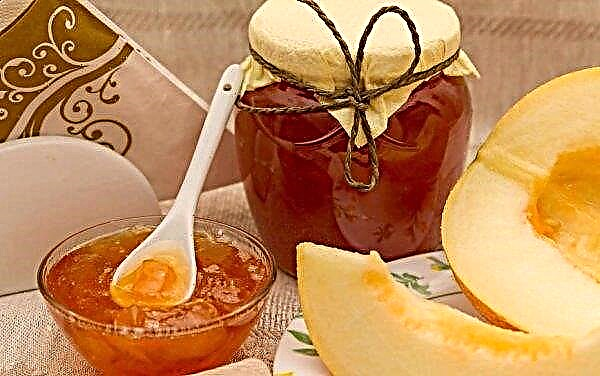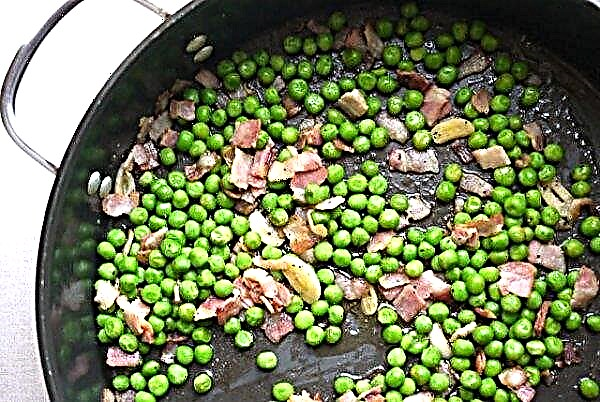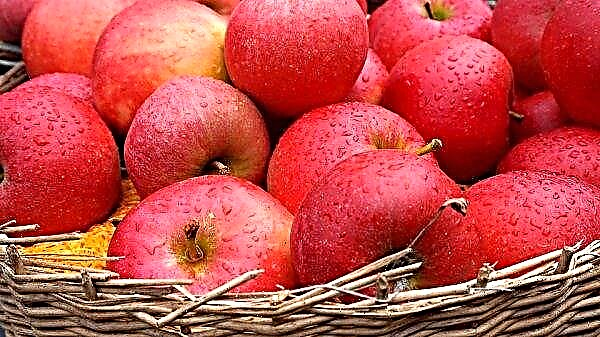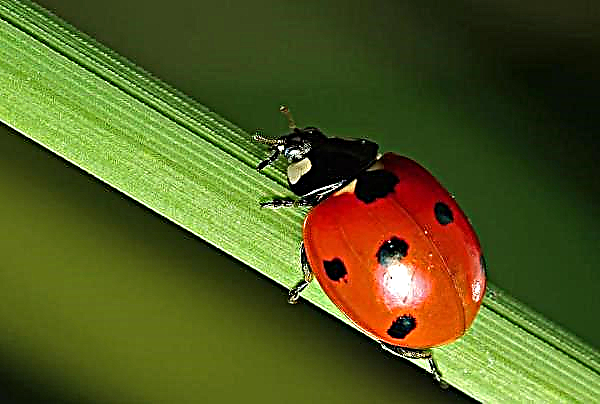Widespread in recent years, the Vine Gold peach variety justifies its popularity. It has many advantages that encourage gardeners from warm regions to buy and plant seedlings in their area. However, caring for the culture is not as simple as it seems at first glance. On the intricacies of growing Vine Gold peach trees, read below.
Description of Vine Gold
Sort Vine Gold T3 - development of Canadian breeders. The variety was obtained in 1994. For hybridization, peach trees Veecling and New Jersey Cling 95 were used as maternal species. Fruits are in the top 10 best peach species in the world.
Tree description
Trees grow to 4–4.5 m. The crown is sprawling, rounded. The trunk is covered with brown bark, young shoots are greenish in color. The leaves are green, lanceolate. Buds in inflorescences of pink color.
Fruit Description
The fruits of the Vine Gold variety are round-oval. The weight of one copy is 150-300 g. The color of peaches is yellow with a bright blush. The flesh is also yellow in color, juicy and dense in structure. The taste of pulp is sweet with a pronounced peach aroma. The stone is round, medium, detaches easily, but with particles of pulp.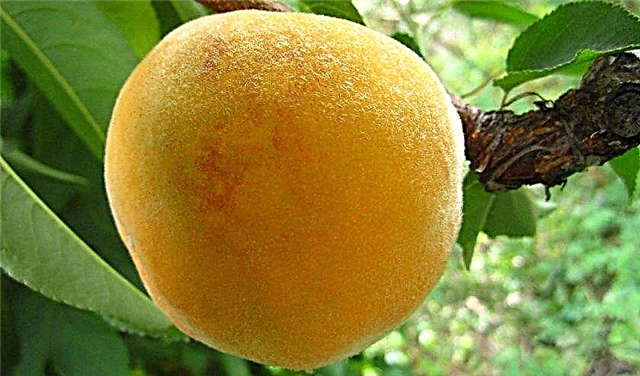
Variety Characteristics
Before planting, pay attention to the following characteristics of Vine Gold peaches - resistance to diseases and weather conditions, pollination, timing of flowering and fruiting, yield and transportability.
Disease and pest resistance
The variety shows high resistance to various diseases and pests. Vine Gold peaches have the highest immunity against powdery mildew and curly leaves.
Drought and frost resistance
Trees successfully survive frosts down to -32 ° С. The drought tolerance of Vine Gold peaches is also high.
Did you know? An ordinary peach is a cultigen that does not occur in the wild in natural conditions.
Pollinating varieties
Vine Gold is a self-fertile variety. Pollinators do not need trees.
Timing of flowering and ripening
Budding begins in late April. The first fruits ripen from the beginning to the second half of August.
Productivity and Transportability
Productivity is high: up to 50 kg of fruit per tree. Fruit transportability is good in the first 3-4 days after harvest. In the following days, the fruit may not withstand transportation.
Advantages and disadvantages of the variety
- Among the advantages of peach:
- frost resistance;
- drought tolerance;
- immunity to disease;
- self-fertility;
- high taste;
- good transportability in the first days after harvesting;
- relatively good storability;
- high productivity;
- universal application.
- The variety has several disadvantages:
- exactingness to the type of soil;
- the average discharge of the bone from the pulp;
- in some cases, non-compliance with varietal characteristics.
Planting, growing and care
The first step in cultivating a variety is planting a seedling. Landing should take place after preliminary preparation and by a certain technology. Further development after rooting depends on proper care, which includes watering, fertilizing, cultivating and preparing for winter.
Optimal landing times
The recommended planting time for seedlings is late March to early April. Landing pits should be ready by this time.
Site selection, soil and well preparation
When choosing a site, pay attention to the illuminated area. It can be the top or the southern slope of a low hill. The territory should be open, but at the same time protected from sharp drafts. A prerequisite for planting a variety is a loamy or sandy loamy substrate. On other soils, the culture may not take root.
Did you know? The name "peach" comes from the Latin malum persicum - "Persian apple". In a later version, the name of the culture sounds like prunus persica - “Persian plum”.
Before digging the landing pit, the soil is loosened. Then it is necessary to dig a pit with a diameter of 4 m and a depth of 5 m. Since the variety is tall, the distance between plants should be about 8 m. The hole should be fed with manure or compost before planting. Fertilizer fill half of the dug hole.
How to plant
The landing technology is as follows.
- Drive a wooden stake into a hole 10 cm from the center.
- Place the seedling in the hole.
- Spread the roots of the tree.
- Holding the seedling, fill the empty space in the planting pit with soil.
 After planting, water the trunk circle abundantly. To preserve moisture in the soil, mulch the soil around the trunk with sawdust.
After planting, water the trunk circle abundantly. To preserve moisture in the soil, mulch the soil around the trunk with sawdust.Watering frequency
The trunk circle is irrigated for the first time 1.5 weeks before budding. Further watering is carried out as the soil dries. During rains, it is better not to water the soil at all. The last time during the growing season, the substrate is moistened 14 days before the maturation of the first crop.
Important! After each watering, loosen the trunk circle. Earth must always be fluffy.
Fertilizer application
Fertilizers are recommended to be applied twice a season:
- when tying fruit - root dressing with potassium-based soluble agents;
- after harvest - the introduction of a nutrient phosphorus mixture.
The drug and dosage are chosen by the gardener based on the availability of funds, climate, age and size of the tree.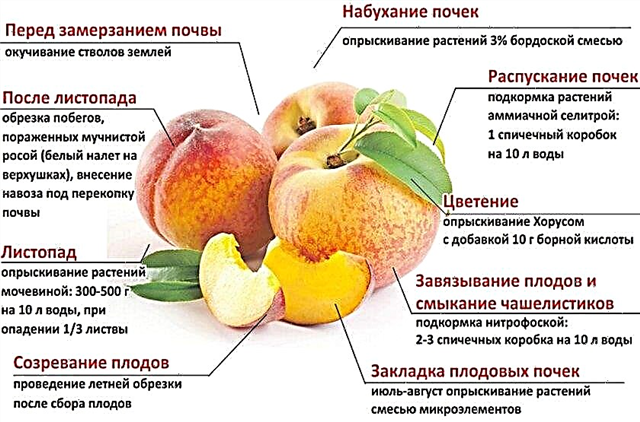
Pest and Disease Control
Vine Gold is one of the most resistant peach varieties. Due to the low susceptibility to diseases, it is not customary to treat trees with chemicals even for prevention.
Winter preparations
The variety has high frost resistance. Along with this, in a small percentage of gardeners, according to reviews, seedlings freeze in frosty winters. As a protection, plants need to be whitened. To completely protect the tree, it is mulched with fallen leaves and wrap the trunk with burlap.
Important! For long-term storage, peaches can be frozen, but the Vine Gold variety is distinguished in that after defrosting, the fruits lose their taste.
Harvesting and storage
Mass ripening of fruits begins in mid-August. After picking from a tree, fruits retain their commercial qualities for a week. It is best to store them in the vegetable box of the refrigerator during this period. The use of fruits is universal. Peaches can be eaten fresh, dried, canned and squeezed juices out of them. The fruits, taken from the peach trees of the Vine Gold variety, captivate with a sweet taste and aroma. This is the main reason gardeners grow crops on their site. With proper care, this type of peach trees will definitely give a quality crop.
The fruits, taken from the peach trees of the Vine Gold variety, captivate with a sweet taste and aroma. This is the main reason gardeners grow crops on their site. With proper care, this type of peach trees will definitely give a quality crop.

